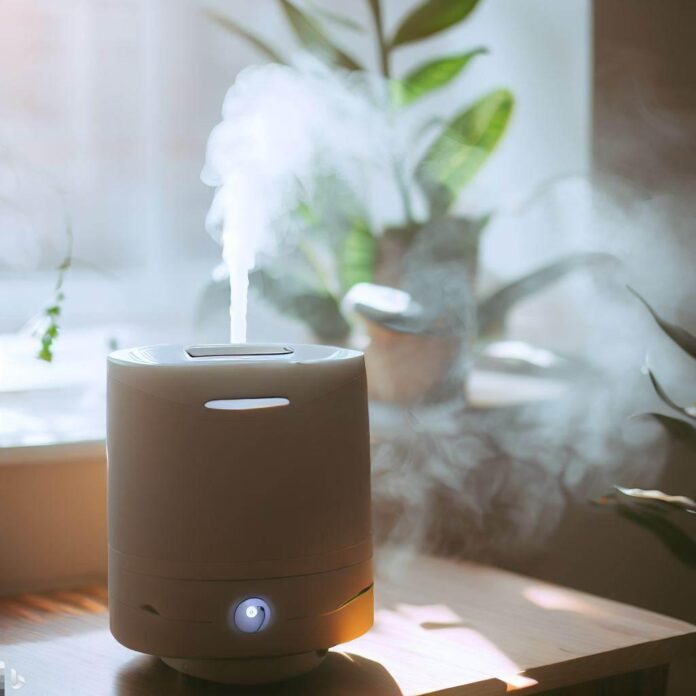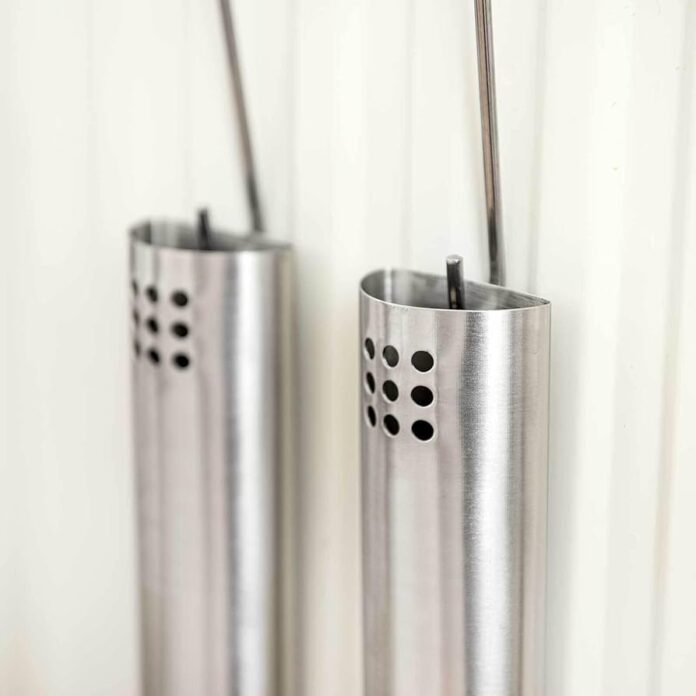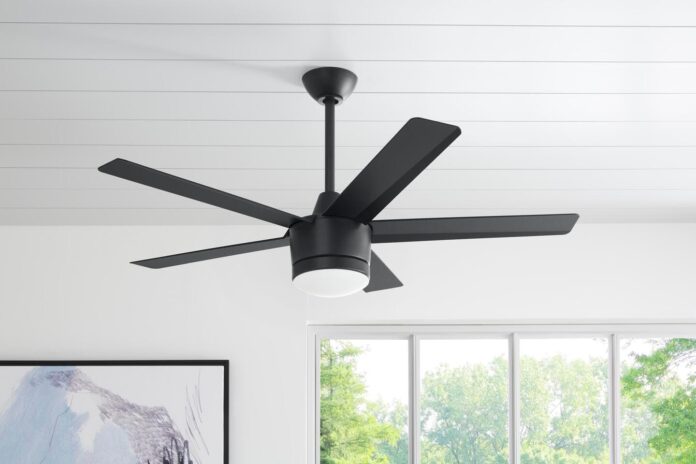Dry air can take a toll on your health and comfort, especially during colder months when heating systems dry the atmosphere in your living space.
Dry skin, irritated eyes, and respiratory discomfort are all signs that your environment lacks adequate humidity.
Thankfully, there are straightforward methods to address this problem and create a more balanced atmosphere at home.
Key Points:
- Use humidifiers for precise control.
- Incorporate plants that naturally release water vapor.
- Optimize airflow with simple changes.
- Adjust habits to maintain balanced humidity.
1. Invest in a Quality Humidifier

A humidifier is one of the most effective ways to add moisture to your living space. With various models available, you can choose one that suits your needs, whether it’s a portable option or a central system.
Many modern options allow for adjustable settings, ensuring your environment reaches the ideal level of moisture.
They come in different types, such as ultrasonic, evaporative, and warm mist, so you can select one based on your preferences and budget.
Regular maintenance, like cleaning the tank and replacing filters, ensures the humidifier operates efficiently without spreading bacteria.
Key Benefits of a Humidifier
- Improves Respiratory Health: Eases sinus congestion and reduces respiratory discomfort, especially for those with allergies or asthma.
- Relieves Dry Skin: Helps prevent irritation and flakiness by adding essential moisture to the air.
- Protects Furniture and Floors: Prevents wooden floors, furniture, and paint from cracking due to excessive dryness.
- Promotes Better Sleep: Reduces issues like dry throats and nasal passages, making it easier to rest peacefully.
- Boosts Plant Growth: Creates a favorable environment for houseplants by maintaining ideal humidity levels.
- Versatile Options: Offers various models like ultrasonic, evaporative, and warm mist, catering to different needs and budgets.
- Energy Efficiency: Helps maintain a comfortable indoor temperature, allowing you to lower heating use in winter.
2. Add Houseplants to Your Space
Certain plants not only beautify your home but also release water vapor naturally. Consider options like peace lilies, ferns, or bamboo palms, which thrive indoors and contribute to better air quality.
Plants act as natural humidifiers, releasing moisture through a process called transpiration. Grouping plants together can amplify this effect, turning your space into a mini indoor oasis.
Also, houseplants improve air quality by filtering out toxins, making your environment healthier overall. Ensure they receive proper light and watering to maintain their health and effectiveness.
3. Leave Water Bowls Around Radiators

Heat sources such as radiators can dry out the surrounding air. A simple solution is to place bowls of water nearby. As the water evaporates, it increases the moisture in the room.
For a fresh scent, consider adding essential oils or herbs to the water. Opt for heat-resistant containers to avoid accidents and place them on a stable surface. Refill the bowls as needed to maintain the effect.
This method is particularly helpful during winter, when radiators are in constant use and the air tends to be at its driest.
4. Use Damp Towels Strategically
Hang damp towels over chairs, doors, or other surfaces in the house. This easy trick allows the water to evaporate, increasing humidity levels without specialized equipment.
It’s a quick fix, especially in areas like bedrooms or living rooms where you spend most of your time.
For better results, use warm water to dampen the towels, as heat accelerates evaporation.
Placing towels near heat sources, like radiators or vents, can also enhance their effectiveness. This approach is cost-effective and simple, requiring only a few minutes of your time.
5. Open Bathroom Doors After a Hot Shower
A hot shower generates a significant amount of steam. Instead of letting it escape unused, leave the bathroom door open after bathing.
The steam will disperse throughout the house, adding much-needed moisture to the air. To maximize the benefit, let the bathroom fan remain off temporarily so the steam isn’t sucked away.
This method works well in smaller homes or apartments where the bathroom is centrally located. It’s also a zero-cost solution, making it a practical choice for anyone.
6. Cook More at Home

Cooking methods such as boiling or steaming release water vapor, benefiting your indoor environment. Preparing soups, stews, or even steaming vegetables can make a noticeable difference.
If you have an open-plan living space, the effect can be even more pronounced. Baking also helps, as it warms the air and adds a subtle amount of humidity.
Cooking at home not only improves humidity levels but also allows you to enjoy healthier meals and save money. This approach is a win-win for your health and home.
7. Use a Portable Vaporizer
If you already own a portable vaporizer, it can serve as a dual-purpose tool. Beyond its primary function, it subtly contributes to raising indoor humidity.
This is especially handy for small spaces where every bit counts. Vaporizers are also energy-efficient and easy to use, making them a practical addition to your home.
If you don’t already have one, consider exploring options online to find a model that fits your needs.
Regular cleaning ensures it operates safely and effectively, adding both comfort and functionality to your environment.
8. Choose Fabrics That Retain Moisture
Certain textiles can absorb and release water vapor naturally. Incorporate rugs, curtains, or even throws made from these materials to help balance the humidity in your living area.
Textiles act as passive humidifiers, holding onto water and releasing it gradually.
Using washable fabrics makes maintenance easier, as regular cleaning helps prevent dust buildup.
Adding layers of fabric in colder months also improves insulation, reducing the need for excessive heating and preventing air from drying out further.
Fabrics That Help Retain Moisture
- Wool: Naturally absorbs and releases water vapor while providing warmth, making it perfect for rugs, throws, and blankets.
- Heavy Cotton: Durable and breathable, ideal for curtains, tablecloths, and cushion covers to subtly enhance humidity.
- Velvet: A luxurious option for upholstery or drapes, which holds moisture and adds a cozy aesthetic to your space.
- Linen: Lightweight and breathable, suitable for summer use while still aiding in humidity retention.
- Chenille: Soft and absorbent, works well for decorative throws, pillow covers, or rugs.
- Terry Cloth: Great for items like seat covers or casual throws, offering high absorbency and easy maintenance.
Using these fabrics throughout your home enhances the atmosphere while adding style and comfort. Regular cleaning ensures they remain effective and fresh.
9. Adjust Ventilation

Proper ventilation allows air to circulate effectively, preventing excessive dryness. Keep windows slightly open for short periods during the day, even in winter. This lets in fresh air, which often contains higher humidity than indoor air.
Cross-ventilation, achieved by opening windows on opposite sides of your home, works even better for balancing air quality.
Combine this with ceiling fans or portable fans to distribute the air evenly. A few minutes of proper ventilation each day can make a noticeable difference in maintaining a healthy atmosphere.
10. Avoid Overheating Your Home
Excessive use of heating systems dries out the air quickly. Instead of cranking up the thermostat, use blankets, slippers, and other cozy items to keep warm. Lowering your heating settings even slightly can help maintain balanced humidity.
Zone heating, where you only warm the rooms you’re using, is another way to save energy and prevent dryness. Sealing gaps around doors and windows can help retain heat more effectively, reducing the need for constant adjustments to the thermostat.
Balancing indoor humidity doesn’t require expensive equipment or complicated processes. With these practical methods, you can create a healthier and more comfortable living space. Choose a few strategies that suit your lifestyle and start enjoying the benefits today.







